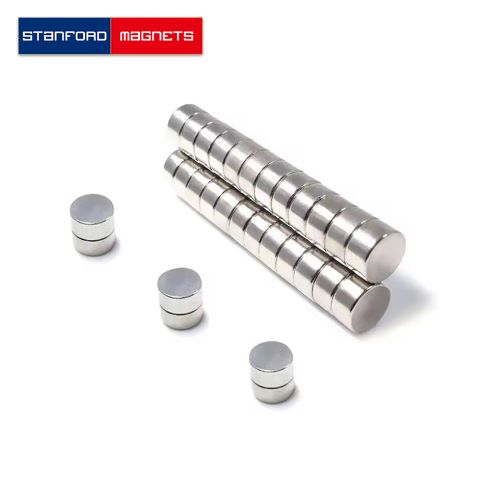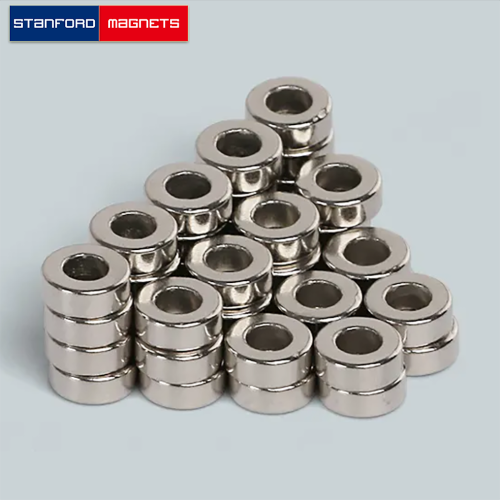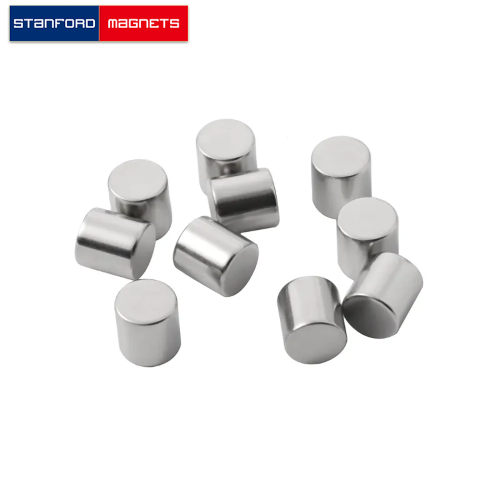Types of Magnet Shapes and Applications
Introduction
Magnets come in a variety of shapes, and each shape offers unique advantages depending on the application. The choice of shape plays a critical role in determining the performance, efficiency, and suitability of a magnet for a specific use. This article will explore some of the most common magnet shapes, their properties, and the various applications where they excel.
1. Disc Magnets
Disc magnets are circular magnets with flat, disk-like shapes, and they are one of the most commonly used magnet shapes. These magnets are often made from materials such as Neodymium, Samarium Cobalt, or Ferrite, depending on the required strength and performance.
Disc magnets are widely used in electronic devices, small motors, sensors, and magnetic assemblies. They are also popular in holding applications, such as magnetic mounts for tools or components. Their compact size and high magnetic strength make them ideal for use in hard drives, MRI machines, speakers, and magnetic bearings. Additionally, smaller disc magnets are often used in the jewelry industry for closures, as they are strong yet easy to handle.

Advantages:
– Simple shape for easy integration into designs.
– High magnetic strength relative to size.
– Versatile and suitable for a wide range of applications.
Challenges:
– Limited to applications where a flat, compact form is needed.
– The magnetic field is relatively uniform, which can sometimes limit precision in some specialized applications.
2. Ring Magnets
Ring magnets are donut-shaped magnets, with a central hole. This shape allows for a unique configuration of the magnetic field, with the field lines running through the center hole and along the outer perimeter. Ring magnets can be made from a variety of materials, including rare-earth magnets like Neodymium or Samarium Cobalt, and are often used in rotating applications.
Ring magnets are most commonly used in motors and actuators. Their shape allows them to be used in magnetic assemblies where the magnet must rotate or fit over a shaft, such as in electric motors, stepper motors, and generators. Additionally, their unique geometry makes them ideal for applications in magnetic coupling, magnetic bearings, and some sensor applications.

Advantages:
– The central hole allows for shaft coupling, which is useful in rotating machinery.
– High efficiency and performance in dynamic applications.
– Can be used in motors with precise rotational control.
Challenges:
– Less versatile for static applications compared to disc magnets.
– Can be more expensive to manufacture due to their specific shape and precision requirements.
3. Cylinder Magnets
Cylinder magnets are similar to disc magnets but have a longer length, creating a cylindrical shape. Like disc magnets, they can be manufactured from various magnetic materials, with Neodymium being the most popular for applications requiring high magnetic strength.
Cylinder magnets are often used in applications that require a strong, stable magnetic field with a longer reach. They are commonly found in electric motors, magnetic separators, loudspeakers, and in industrial applications where long, uniform magnetic fields are needed, such as in conveyor belts for material handling. In addition, cylindrical magnets are used in the medical industry, particularly in MRI machines where a strong, evenly distributed field is required.

Advantages:
– Provides a long magnetic field, which can be useful in industrial processes or motor systems.
– Strong and stable magnetic field distribution.
– Suitable for applications requiring magnets that can operate in a linear or cylindrical assembly.
Challenges:
– Not as compact as disc magnets, so they may not be suitable for space-constrained designs.
– The elongated form may reduce the versatility in some small-scale or consumer applications.
4. Block Magnets
Block magnets are rectangular or square-shaped magnets, often used when the application requires a specific, uniform magnetic field with a broad surface area. These magnets can be manufactured from various materials, including rare-earth magnets for high-performance applications or ferrite magnets for cost-effective solutions.
Block magnets are commonly used in applications like magnetic assemblies, holding devices, and sensors. Due to their large surface area, they are particularly useful for applications that require a strong magnetic field to be applied across a larger space, such as in magnetic separators, industrial lifting equipment, and as holding magnets in manufacturing. These magnets are also used in high-performance motors and actuators where a uniform field distribution is necessary.
Advantages:
– Large surface area allows for greater magnetic flux, making them ideal for industrial applications.
– Provides strong, stable magnetic fields.
– Easy to integrate into various mechanical systems.
Challenges:
– Can be bulky and heavy, making them unsuitable for applications requiring compact or lightweight components.
– Not as efficient in applications where precise, focused magnetic fields are required.
5. Sphere Magnets
Spherical magnets are three-dimensional magnets with a perfectly round shape. While less common than other shapes, they are highly effective in specific applications due to their uniform magnetic field distribution. These magnets can be made from Neodymium, Samarium Cobalt, or Ferrite materials.
Spherical magnets are often used in scientific research, particularly in applications that require uniform magnetic fields or in magnetic resonance imaging (MRI) where a smooth, symmetrical field distribution is important. They are also used in levitation experiments, such as in magnetic levitation (maglev) trains, and in educational demonstrations of magnetism.
Advantages:
– Symmetrical magnetic field, which makes them ideal for applications requiring uniform field distribution.
– Ideal for use in levitation and scientific experiments.
Challenges:
– More difficult and expensive to manufacture due to the precision required in shaping.
– Limited applications outside of scientific or specialized fields.
6. Custom-Shaped Magnets
In many advanced applications, particularly in aerospace, automotive, and medical industries, custom-shaped magnets are often required. These magnets can be tailored to specific geometries that optimize performance for specialized tasks.
Custom magnets are used in highly specialized and performance-driven industries, including medical imaging, space technology, and defense applications. They are also used in precision engineering and manufacturing processes, where standard shapes do not meet the specific design or performance requirements.
Advantages:
– Tailored to meet the specific needs of the application.
– Maximizes efficiency and performance in niche industries.
Challenges:
– Higher manufacturing costs.
– Extended lead times for production.
Conclusion
The shape of a magnet plays a crucial role in determining its effectiveness and suitability for various applications. While some shapes, such as block and cylinder magnets, are preferred for industrial applications, others like spherical magnets and custom-shaped magnets are used in specialized fields like scientific research and advanced technology.
By understanding the properties and applications of different magnet shapes, manufacturers and engineers can make informed decisions to optimize their designs and meet specific performance requirements. For more information, please check Stanford Magnets.